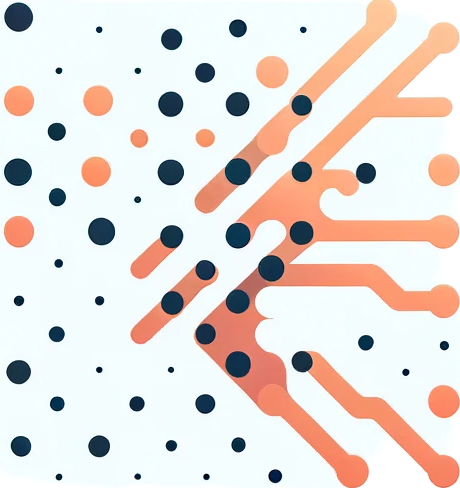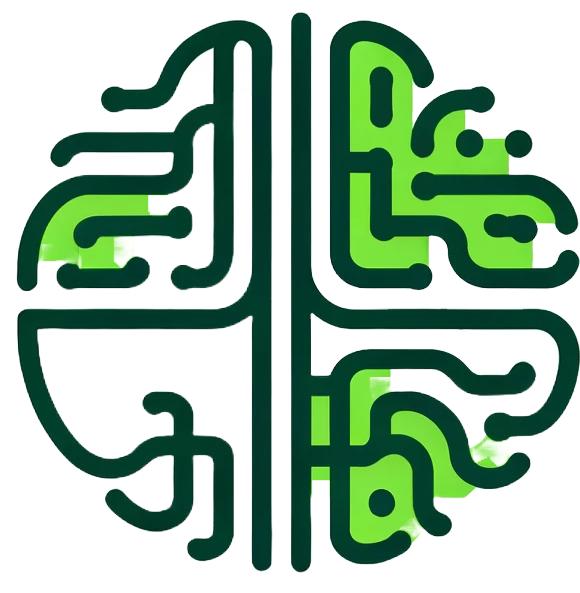Main Idea
Reconciling wind energie and species protection using Artificial Intelligence
The contribution of wind energy expansion will be central to Germany’s energy transformation. The buildout of wind power, however, has been facing strong headwinds lately. Currently, fewer and fewer wind farms are being installed. Why is that?
The reason often lies in legal matters. Lawsuits due to the protection of endangered species often delay the process. The authorities need to ensure that the construction and use of wind farms complies with the provisions of bird protection directives: the habitat of threatened species must not be impaired by power plants. This is why ornithologists need to check potential building areas for endangered bird species first. They record bird voices in the area and classify them one by one. This method is effective but highly time-consuming: a win for the fauna – a loss for wind expansion.
The expansion of wind energy hence entails a contradiction. On the one hand, in-depth species protection reports are essential for the preservation of threatened species. On the other hand, they create legal barriers that delay wind power buildouts.
Protecting species or accelerating wind expansion? DeepBirdDetect makes both possible.
The centerpiece of DeepBirdDetect is an artificial intelligence that identifies bird voices. Equipped with the AI, “smart recorders” will continuously register the occurrence and distribution of species in any area according to spatial and temporal parameters. A mobile application will present the results in a user-friendly interface and equip users such as ornithologists and mappers with an effective tool for thoroughly screening the fauna in their territory.
This is how DeepBirdDetect reconciles the conflict: It accelerates the approval process for wind expansion and helps ornithologists and faunistic experts comprehensively document the biodiversity of their territory.
AI Methods
Few-Shot Learning

With the help of Few-Shot-Learning AI models can be developed even with only a small amount of available data. Normally, AI requires a large amount of training data in order to learn patterns and make predictions. With Few-Shot Learning , however, the AI learns from just a few examples. So-called prior knowledge, for example in the form of a model pre-trained with other, similar data, serves as the starting point. The few shot data is then applied to this. A major advantage of using only a small amount of well-annotated data is that the often lengthy and cost-intensive annotations can be significantly reduced.
The DeepBirdDetect AI should identify as many different bird sounds as possible. However, there are not always sufficient sound examples of each species available to train the AI with. With the help of few-shot learning, the AI can nevertheless independently derive patterns and information from the bird sounds it knows and thus also identify bird songs of which it has very few sound examples.
Contrastive Learning

Using Contrastive Learning , a computer learns through comparisons. The AI compares data sets and filters out similarities and differences. It will use these findings to distinguish the different data from one another. This allows the AI to be trained with unlabeled data sets that have not already been categorized in advance. Contrastive learning offers significant advantages for bird call classification, including the ability to make do with less annotated data, generate more robust and generalisable feature representations of the data, and adapt efficiently to different environments and conditions.
DeepBirdDetect uses contrastive learning to better recognize different types of bird calls. The AI can categorize a bird call based on differences or similarities to familiar bird calls.
Active Learning

Active Learning is a method of machine learning. The computer decides for itself which data it wants to use for its training instead of just waiting for predefined data sets. It actively asks for the specific information it requires - comparable to a motivated student who does not just passively absorb the lesson material but asks questions in order to understand. The aim is to keep the required annotations low and thus minimise annotation costs by selecting relevant data appropriately while maintaining high model performance.
When users use the DeepBirdDetect AI to identify bird calls, new data is continuously generated. Users record new audio files and they can, if ornithologically experienced, give the AI feedback on its analysis. Through active learning, the AI can use this valuable data to identify more bird calls and deliver more reliable results.
Self-Supervised Learning

With the help of Self-Supervised Learning (SSL) , computers can learn from data that has no specific labels. Instead, the computer generates its own labels. These labels are then used for supervised learning tasks, in particular for classification: SSL-models can learn to understand images, for instance. Artificial tasks are constructed to create the labels. One of these tasks can be hiding parts of images and training the model to reconstruct these hidden parts. This is how the SSL-model can understand relationships and similarities of the data.
This approach aims to significantly increase the efficiency and raise quality standards. Modern deep learning methods are used to perform the task of label generation autonomously. Suitable techniques from both areas are selected and applied to the respective problem in order to develop and evaluate new models.
In DeepBirdDetect, self-supervised learning is implemented using a combination of contrastive learning and few-shot learning. Once the model has been trained to learn a meaningful representation of bird calls, it can be fine-tuned to a classification task that involves classifying the different call types. This approach utilises the prior knowledge that the model has acquired through self-supervised learning to improve performance on the classification task.
Explainable AI

Explainable AI (XAI) umfasst verschiedene Methoden, die die Entscheidungsprozesse von KI-Modellen transparent und nachvollziehbar machen. Durch die Offenlegung der internen Mechanismen und Entscheidungsgrundlagen können Nutzer KI-Modelle besser verstehen und Vertrauen in ihre Anwendungen gewinnen. Darüber hinaus ermöglicht XAI, potenzielle Verzerrungen und Fehler in den Modellen zu identifizieren und zu korrigieren, was die Zuverlässigkeit und Fairness von KI-Systemen deutlich erhöht. Dies fördert nicht nur die Akzeptanz, sondern auch den verantwortungsvollen und ethischen Einsatz von KI-Technologien.
Explainable AI unterstützt DeepBirdDetect dabei, die Entscheidungsprozesse der KI bei der Erkennung von Vogelstimmen transparent und nachvollziehbar zu machen. Dadurch können Nutzer die Zuordnung bestimmter Laute zu Vogelarten nachvollziehen, was das Vertrauen in die Technologie stärkt und eine fundierte Fehleranalyse sowie Korrekturmöglichkeiten bietet. Darüber hinaus können ornithologische Experten die Genauigkeit und Zuverlässigkeit der Erkennung validieren und kontinuierlich verbessern.
Motivation
We think, renewable energy and protection of species are not mutually exclusive.
Germany aims to be climate neutral by 2045.
Additionally, the member states of the United Nations have defined 17 Sustainable Development Goals (SDG) which must be achieved by 2030. These ambitious targets reflect the growing pressure to curb climate change and develop sustainable solutions.
Accomplishing such demanding objectives necessitates cooperation. Tackling the challenge together means sharing our knowledge, working together efficiently, and profiting from synergies instead of creating conflicts.
One example for different sustainability goals being in conflict is the expansion of renewable energy on the one hand and the preservation of biodiversity on the other.
The construction and use of wind turbines undoubtedly causes a considerable interference with nature. Wind turbines have deep foundations, the cement seals the ground and yes, the rotors of wind turbines may represent a danger to birds. Bird conservationists are therefore right to remind us that the energy transition must not be implemented at the expense of biodiversity.
Resigning instead of accepting the challenge? This will not resolve the conflict – quite the contrary:
At present, stakeholders even misuse species protection as a reason for lawsuits against wind expansion. However, the Nature and Biodiversity Conversation Union (NABU) has estimatedthat compared to other external influences such as industrial agriculture, wind turbines only bear a small risk for birds – even cats kill 600 times more birds every year.
Nevertheless, we must act responsibly. Saving our planet requires both: biodiversity and clean energy. We need to build solutions that eliminate the impact of wind turbines on threatened bird species.
Birds are an integral part of our ecosystem. They help preserving the native flora by pollinating plants and spreading seeds. Birds also feed primarily on insects and therefore function as natural insect-pest controllers. They regulate the populations of harmful insects that attack and destroy plants. The population of birds in our environment is therefore crucial for the ecological balance.
Germany is home to numerous different bird species. However, the diversity of bird species has declined during the past years. Numerous species are facing extinction due to climate change and the destruction of their natural habitats. A loss of biodiversity jeopardizes the ecosystem.
It is therefore essential to choose the location for wind turbines carefully. At the same time, the threat of global warming urges us to switch to renewable energy sources as quickly as possible.
DeepBirdDetect shows how technological innovation can contribute to reconciling seemingly contradictory objectives. DeepBirdDetect resolves the conflict between the expansion of wind energy on the one hand and species protection on the other hand. It provides a solution that merges the demands of species protection and accelerated energy transformation in one application.
This is how DeepBirdDetect contributes to three of the United Nation’s Sustainable Development Goals:

Goal 7 Affordable and Clean Energie

Goal 13 Climate Action

Goal 15 Life on Land